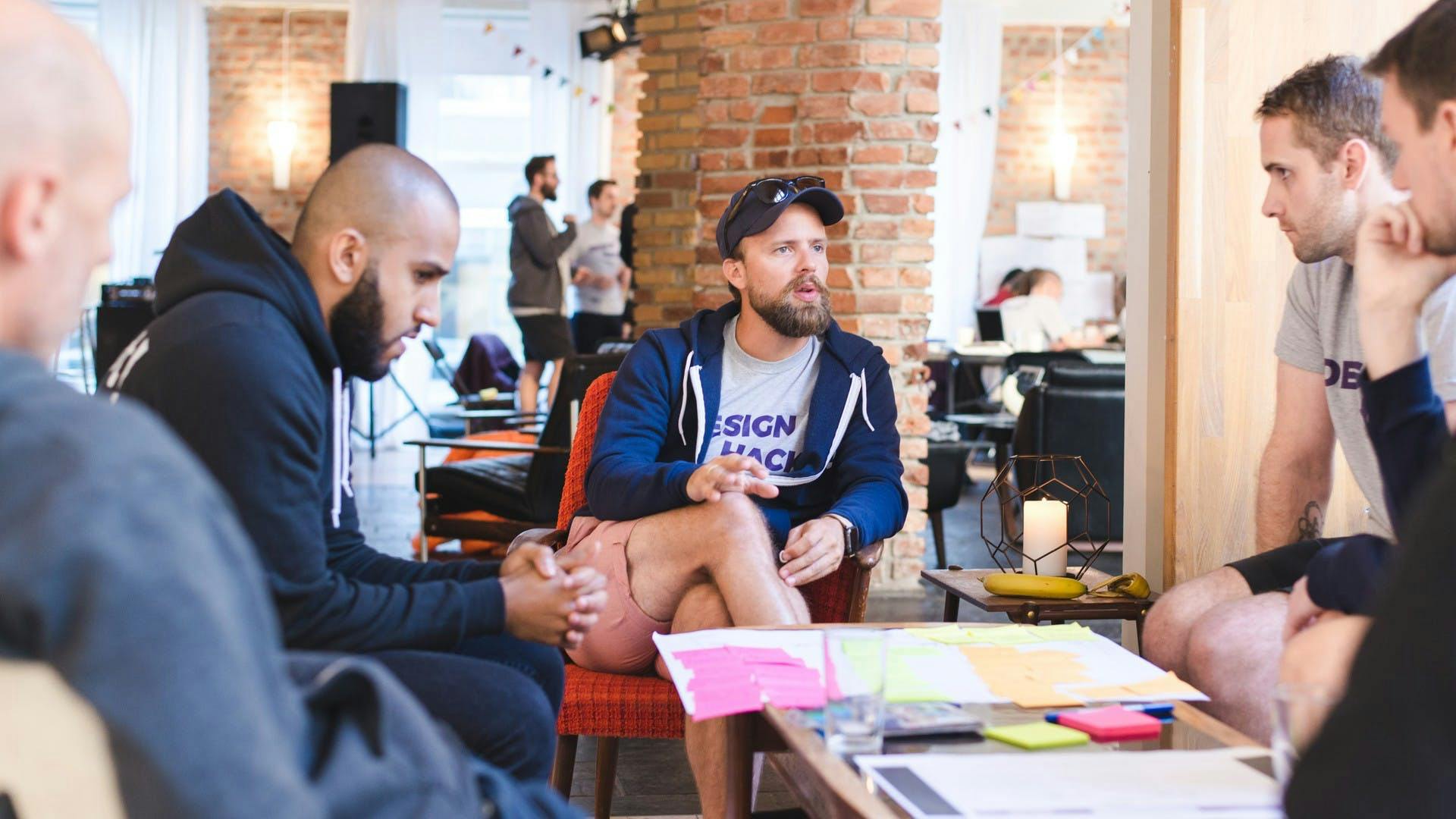‘We innovated on our ideas and found a way for people to have fun together and learn’
ne of the best known education tech startups out there is Norwegian-born Kahoot!, the platform that turns learning environments into quiz shows. At the heart of the company lies an inspiring origin story, with co-founder and former CEO Johan Brand at center stage.
Ask anyone in the Nordic startup ecosystem – or anyone in education, for that matter – for one of the more exciting startups to fawn over, and Kahoot! consistently comes up. Launched in 2013, it has become one of the go-to learning platforms for learners and teachers hoping to add gamification to their classroom experience.
For those who have never heard of Kahoot!, it’s a platform that innovates the learning experience via shared trivia games. It’s free for schools, with paid versions for learning environments in the workplace, and the possibility to integrate branded premium content.
Currently, the platform reaches over 70 million active users all over the globe, with a large concentration in North America. Figures published on the company’s site reveal that someone creates and plays a Kahoot! game roughly every three to four seconds, and 15 billion cumulative minutes have been spent enjoying the technology.
The app functions for all subjects, languages, and devices. The way it works is that players read questions on a shared screen and then research and answer the questions on their own phones and tablets. As a learning tool, not only is it wicked fun to use, it also encourages the use of technology to foster real human connection and explore the impact of these connections.
Co-founder Johan Brand spoke with Startup Guide in 2016 about where his inspiration sprung from, and how he built the colorful and friendly Kahoot! system. Johan has since left his position as CEO to engage entrepreneurs in the most nautical of fashions, but more on that a bit later.
An artistic origin story
Johan founded Kahoot! in 2012 along with Morten Versvik and Jamie Brooker. The startup was also launched in collaboration with professor Al Inge Wang of the Norwegian University of Technology and Science (NTNU), and later, Åsmund Furuseth, who’s a Norwegian entrepreneur.
The tech behind the colorful gaming platform is based on Morten’s own research, conducted while he was completing a Master’s degree at NTNU. The professorial collaborator mentioned previously was actually his teacher at the time. By 2017, the company were one of the top three tools in US education, and had launched new products such as a mobile app and K! Studio.
If you have a good enough idea that’s focused on what you know really well, the investors come.
This, at least, is the origin story in brass tacks. If we zoom in on Johan himself – an extensive interview with him is featured in our Startup Guide Oslo book – we get a more in-depth story into how creativity, supporting startup ecosystems, gaming, and even a love for sailing, factored into the creation of a powerhouse piece of education technology.
From early on in his career in Oslo, Johan was heavily invested in helping others in the ecosystem realize their potential and create impactful companies. His first foray into entrepreneurship was when he was a mere 20 years old. He was helping a company develop a precursor to the smartphone, and was present when they signed an investment deal of 100 million NOK. Although the company did not succeed in the end, the exposure to the world of entrepreneurship and innovation guided Johan’s journey.
“It taught me that if you have a good enough idea that’s focused on what you know really well, the investors come,” he said about the experience. “I saw Silicon Valley come to Oslo.”
After this introduction to the ecosystem, Johan taught himself to code and created his first company, Brand Media, which was designed to help service industry companies improve how they functioned. As he started the company at university, it was never scaled, though it was a valuable learning experience.
In keeping with his goal of helping startups achieve and grow, Johan later founded the company We Are Human with Jamie, who would become one of Kahoot!’s founders. Johan says the company’s purpose “was to use our design thinking and technology know-how to help start companies that have social impact.” We Are Human are still active today, and collaborate with initiatives such as MESH and StartupLab.
We didn’t invent 'the quiz.’ We didn’t invent mobile phone technology. We didn’t invent anything. But we innovated on these ideas.
Surprisingly, Johan’s academic background is not in business. After giving business school a try, he instead focused on fine art photography. To bolster his entrepreneurial education, he attended Gründerskolen in Oslo, where he was able to work and network abroad. As a student at Gründerskolen, he had the opportunity to learn in Boston, where he met and worked for game designer Vicky Woo.
“I encourage everyone interested in entrepreneurship to get involved with Grüderskolen,” Johan said. “People say you can’t go to school to be an entrepreneur. That’s true in many ways, but this school is about exposing you. Through exposure, you really learn.”
It’s no wonder that learning remained at the forefront of Johan’s entrepreneurial philosophy, whether as part of what makes Kahoot! so successful or what makes Johan such a passionate supporter of local and international startup ecosystems.
For the love of the game
Prior to Kahoot!’s founding, Johan worked and innovated in London, before enmeshing himself in the coworking space MESH in Oslo. He was integral in bringing MESH and London’s Trampery together - another in an evolving rolodex of connections made to support growth within the startup world.
It was at MESH where he met his co-founder Morten, whilst building the Oslo startup scene. By 2012, Johan and Morten were traveling to Silicon Valley with a learning product, and other developments, in hand.
Johan and Morten wanted to connect people and give them the opportunity to learn together. They realized that they could innovate on the concept of the quiz, and bring their technology to the classroom. It was online gaming, brought into the real world, the connectivity of the internet and the closeness of one group of students mixed to make learning a friendly, collaborative competition. In the story of this startup, the place was the breakthrough, not the idea.
“In the classroom, people are all sitting together all the time,” said Johan. “They’re not doing what they should be doing – playing – which all the research shows is the best way to learn.”
In regards to developing Kahoot!, Johan said: “we didn’t invent ‘the quiz.’ We didn’t invent the mobile phone technology. We didn’t invent anything. But we innovated on these ideas. The point was to find a way for people to have fun together and learn.”
Developing at sea
One of the standout lessons from the development of Kahoot! – and how Johan works – is an affinity for nature. The company could perhaps have been a bigger hit in Silicon Valley, as opposed to Oslo, but having pristine and vast nature a stone’s throw away afforded Johan focus and clarity.
In terms of what he would advise other startups and founders to do along their journey, Johan speaks fondly of an experience in which he took his entire Kahoot! crew on a boat trip for five days. Once nestled amongst the fjords, Johan turned off the vessel’s engine and had his work mates listen to the nature. “Being in nature with all of their colleagues in silence was something I could give them,” he said, pointing out the advantage of innovating in the Nordics as opposed to in huge cities.
Johan’s love of nature and the sea has in fact drawn him to an entirely new venture. After instilling a love of the ocean in Kahoot! with yearly company boat outings, he left the startup in 2017 to launch EntrepreneurShipOne, a platform for teaching sustainable entrepreneurship.
What makes this project unique is that it takes place entirely on a boat: a 1986 X-Yacht, to be exact, refitted to meet the needs of a brand new startup platform. Entrepreneurs hop on this zero-emission sailboat to learn how to sail, and come away with valuable lessons applicable to the startup ecosystem. Like sailing, founders and startups require strong teamwork, flexibility, the ability to face changing winds, and passion for the journey.
EntrepreneurShipOne is currently working to build up a fleet of boats, and notably partnered with Blueye Robotics, which created the Pioneer underwater drone.
The continued success of Kahoot! may be traced back to the philosophy of being creative and taking charge when all the elements are working against you. Collaboration is a key success factor, in the startup ocean and its less metaphorical counterpart. On Kahoot!’s website, leaders are listed as captains. And although Johan is no longer at the helm, the nautical philosophy remains.
Wherever the tides take them, human connection and personal impact are still at the forefront of what makes Kahoot! a standout startup. “Give something to someone,” said Johan. Don’t think about what you’re going to get back. Just give something. Do something.”
Main photo: Startup Guide

